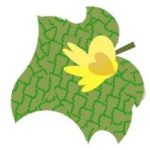Genomic-assisted breeding for disease resistance in cucurbit cultivars
Cucurbit growers and processors consistently identify fungal/oomycete pathogens and insect-transmitted viral diseases as major production constraints causing severe reductions in yield, loss of fruit quality, and increased labor and expense for control. Disease-resistant cultivars are the most cost-effective and environmentally desirable solution to these problems. Since acceptance and value of new cultivars depends on a combination of yield and ease of production for the producer, and price and desirability for the consumer, breeding programs must combine multiple disease resistances without sacrificing yield or quality.
Cucurbit breeders must find sources of resistance, identify loci conferring resistance, incorporate new resistances into elite cultivars, and combine resistances to multiple diseases. Sequencing and bioinformatics tools can facilitate more rapid and accurate identification of relevant genomic regions, and development of molecular markers for marker assisted selection (MAS). MAS, which allows for direct DNA screening in early generations or growth stages, is of particular value for disease resistance as screening for one resistance may preclude screening for another, and disease response can be strongly influenced by environment.
CucCAP breeding objectives are to map resistance loci for key cucurbit diseases; develop and verify molecular markers for efficient trait selection and gene pyramiding, and to introgress resistances into advanced breeding lines. For each of the priority crop-disease combinations, as well as several additional combinations, screening methods have been developed and sources of resistance have been identified. The current status of breeding for the priority cucurbit diseases varies with crop/disease combination.
 |
 |
 |
 |
 |
| Cucumber Breeding | Melon Breeding | Squash Breeding | Watermelon Breeding | Breeding Links |
